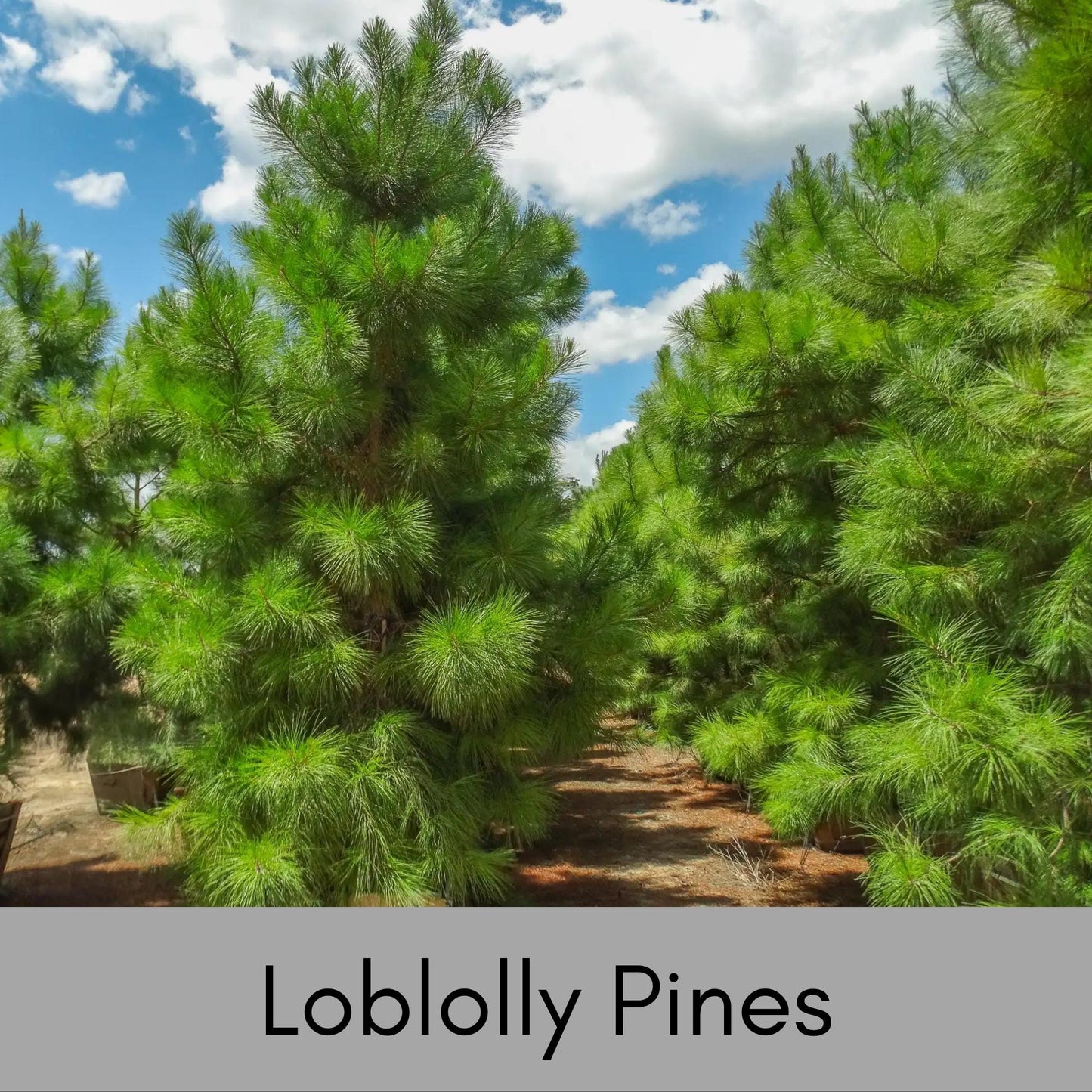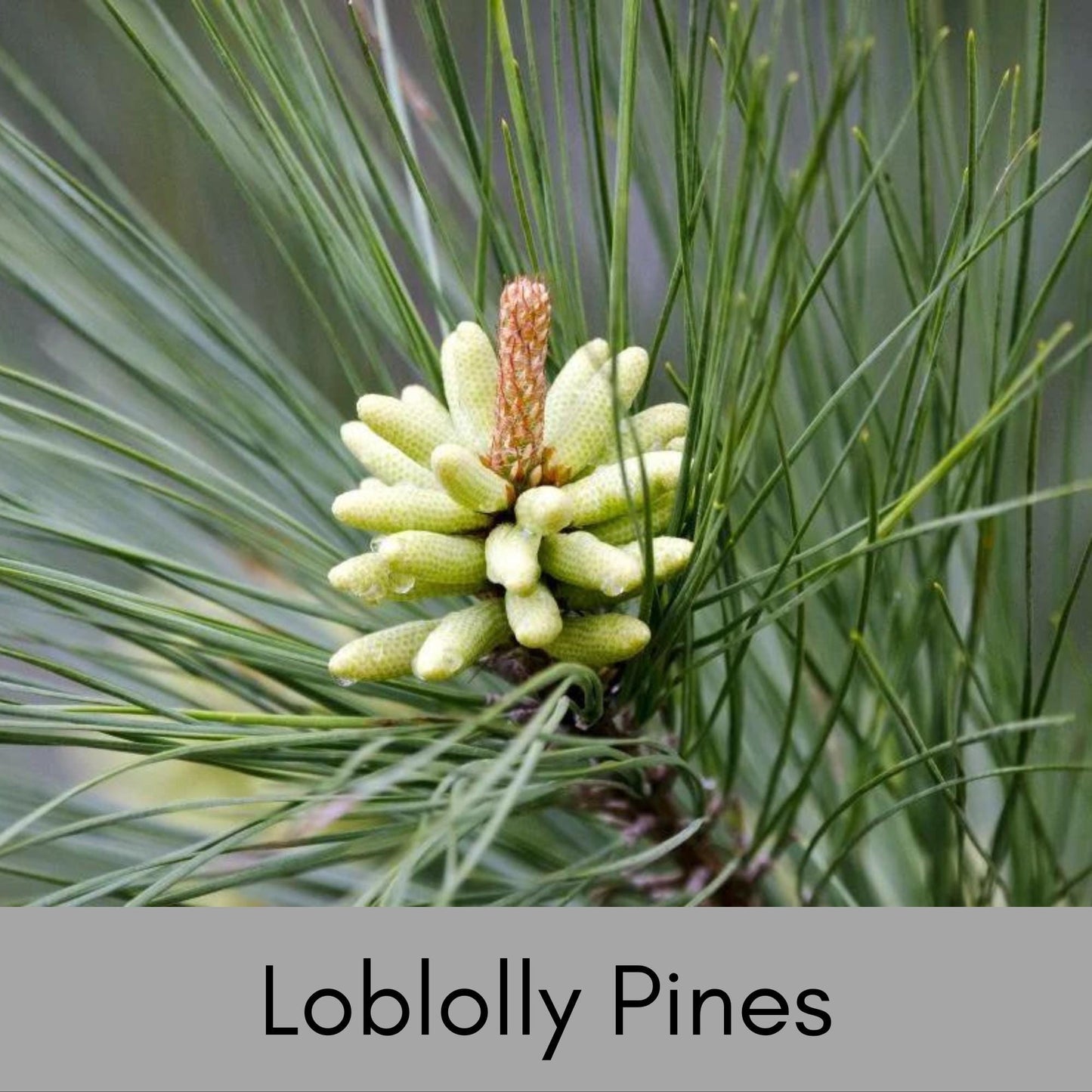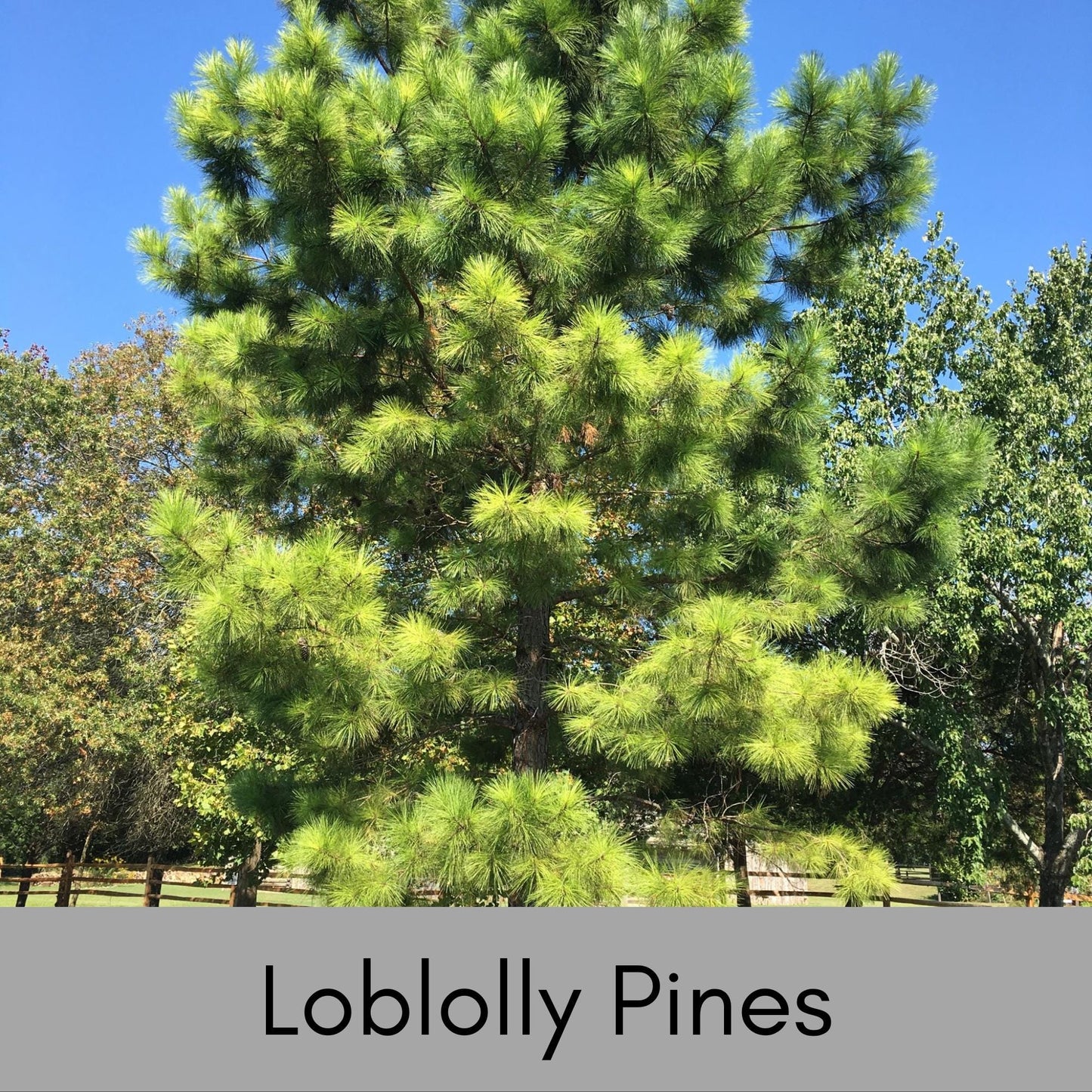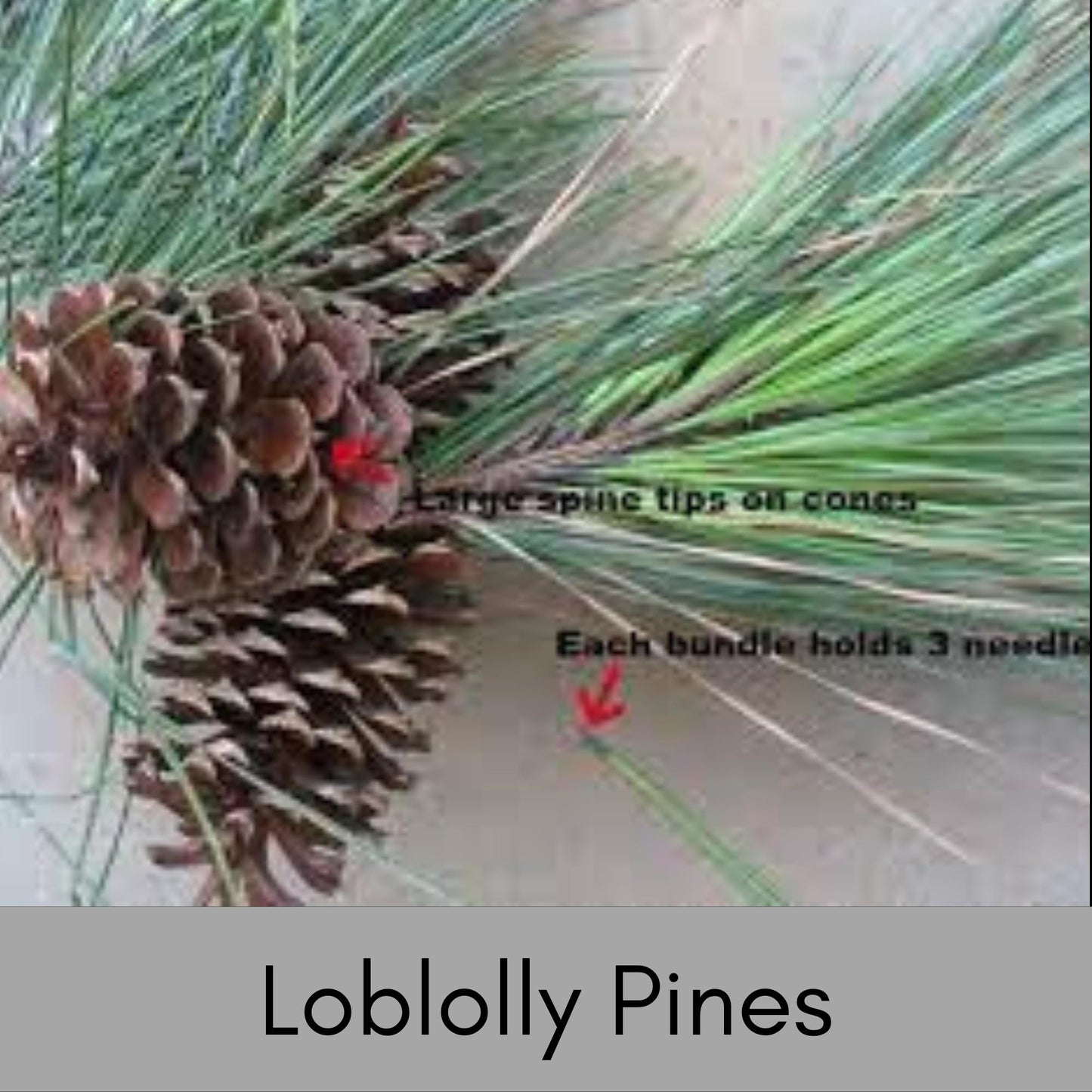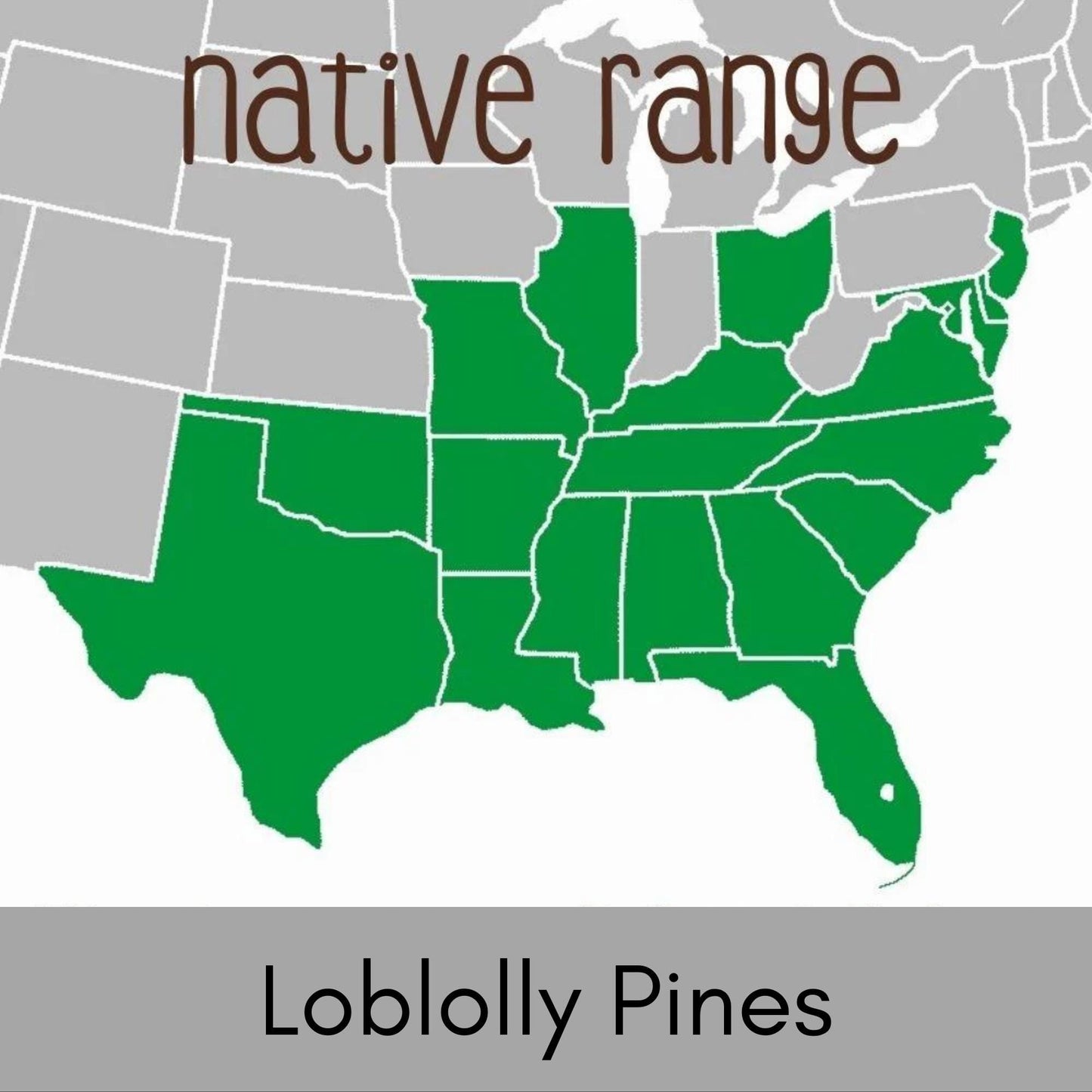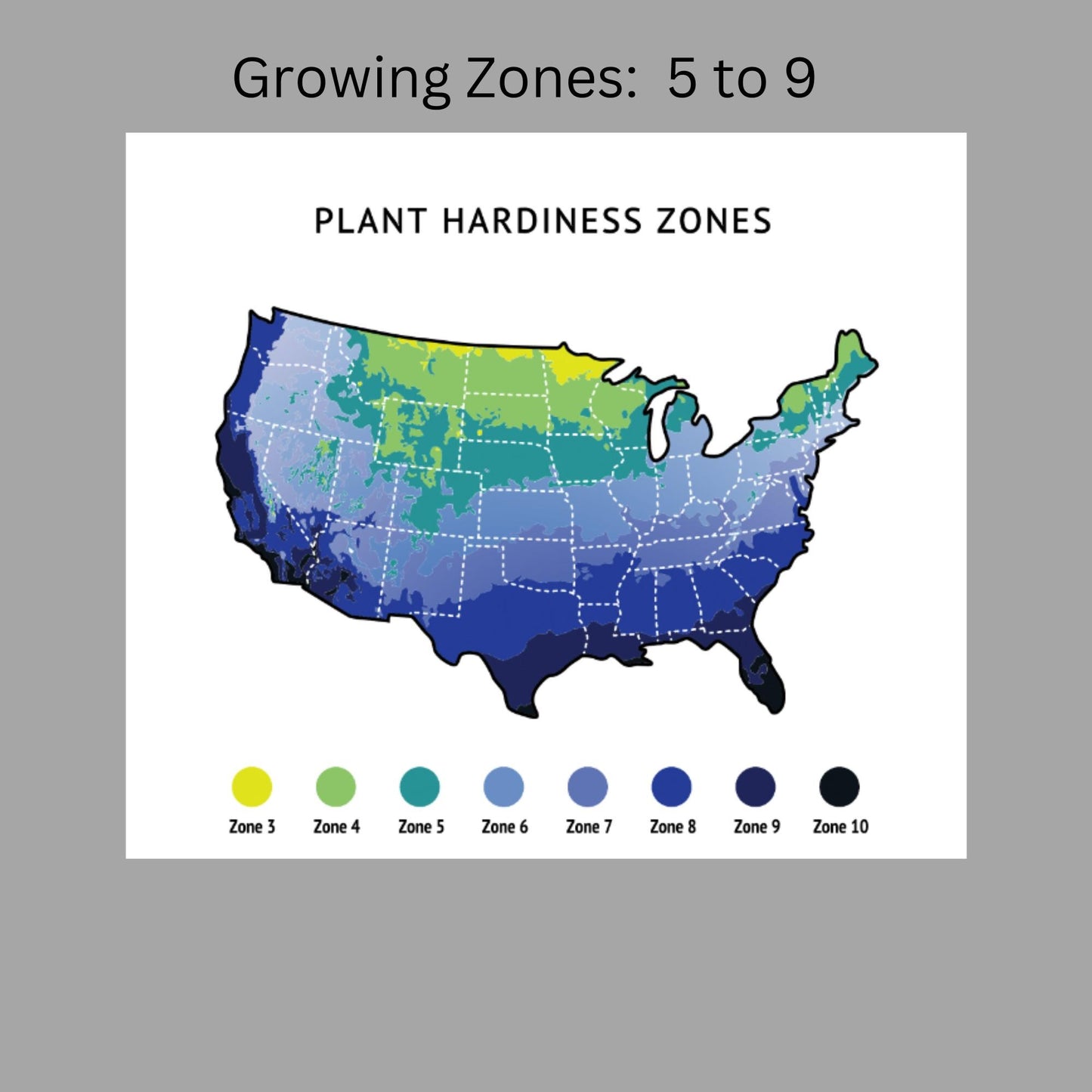Loblolly Pine Trees | 10 SEEDLINGS per Order!
Loblolly Pine Trees | 10 SEEDLINGS per Order!
Couldn't load pickup availability
10 Trees are shipped per order!
Loblolly pine trees are a common and economically important species of pine native to the southeastern United States. They are known for their rapid growth and adaptability to a variety of soil types, which makes them a popular choice for reforestation, timber production, and landscaping. Here's some information on caring for and describing loblolly pine trees in a landscape setting:
Description:
Size: Loblolly pines are typically large trees, reaching heights of 60 to 100 feet or more when mature.
Foliage: The needles of loblolly pine trees are long and slender, usually occurring in bundles of three. They are dark green and can persist on the tree for up to two years before shedding.
Bark: Young loblolly pines have thin, scaly bark that is gray to reddish-brown. As the tree matures, the bark becomes thicker and develops deep furrows.
Cones: Loblolly pine cones are oval-shaped and can range in size from 3 to 6 inches long. They are typically reddish-brown when mature and hold seeds that are an important food source for wildlife.
Caring for Loblolly Pine Trees:
Location: Loblolly pines prefer full sun and well-drained soil. They are adaptable to a range of soil types but thrive in acidic soils.
Watering: While loblolly pines are relatively drought-tolerant once established, it's essential to provide consistent moisture during their early years. Water young trees deeply and regularly until they establish a strong root system.
Mulching: Applying a layer of mulch around the base of the tree helps conserve soil moisture, regulate soil temperature, and reduce competition from weeds.
Pruning: Loblolly pines typically require minimal pruning, primarily to remove dead or diseased branches. Pruning should be done during the dormant season.
Fertilizing: In most cases, loblolly pines growing in landscapes don't require regular fertilization. However, if your soil is deficient in essential nutrients, a slow-release, balanced fertilizer can be applied in early spring.
Pest and Disease Management: Keep an eye out for common pine pests and diseases, such as pine bark beetles and rust diseases. Timely management is essential to prevent severe damage.
Spacing: When planting multiple loblolly pine trees, ensure they have adequate spacing between them to allow for proper growth and airflow.
Wildlife Attraction: Loblolly pines are known for attracting various wildlife species, including birds and squirrels, which feed on their seeds and use them for shelter.
Landscape Design: Due to their size, loblolly pines are often used as shade trees in larger landscapes, parks, and naturalized areas. They can also serve as windbreaks and privacy screens.
Maintenance: Regularly monitor the health of your loblolly pine trees and address any issues promptly to ensure their long-term vitality in your landscape.
Loblolly pine trees can add beauty, shade, and wildlife habitat to your landscape if properly cared for. Their rapid growth and adaptability make them a valuable choice for many landscaping purposes in suitable climates.
Share
